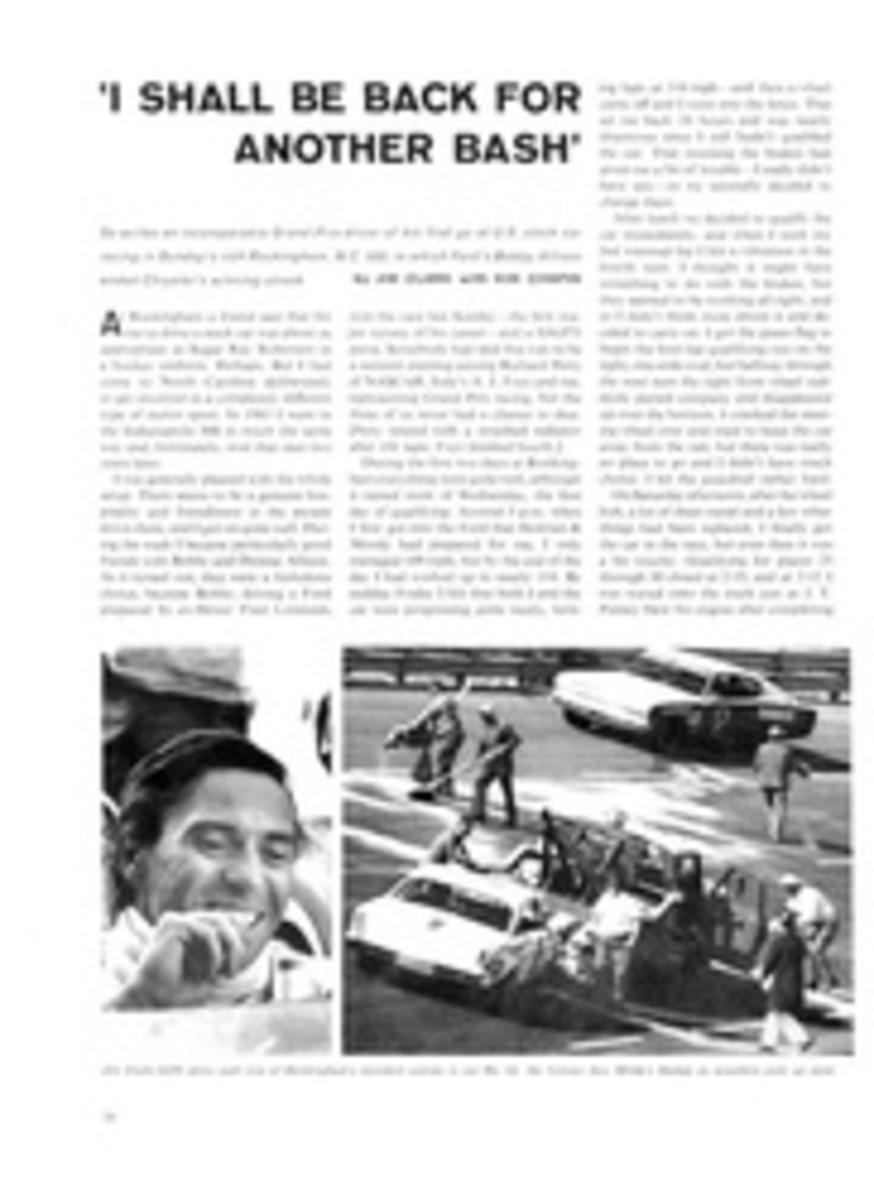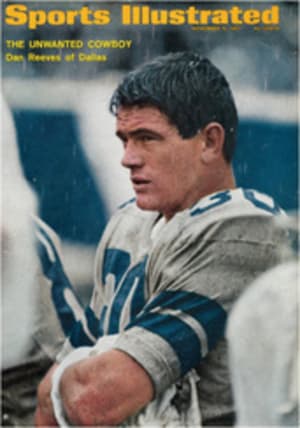
Three Courses in One Day
This is a story about three golf courses in three different countries, and a single day: Tuesday, July 25, 1967. Although I intend to keep it as short as possible, it appears to me to be essential, if only for the record, to bring out certain facts that predated that day.
For a period of two years I had given a great deal of thought to the possibility of playing three golf courses in three countries on the same day. The idea had come from a trip I made to Scotland in 1965 during which I had played six golf courses: Troon, Carnoustie, Muirfield, The King's of Gleneagles, the Queen's of Gleneagles and St. Andrews, the last three in one day.
The three-country idea developed to the planning state last spring, and by the time I was ready to leave on vacation on July 7th, I was committed to carry out my project, if for no other reason than that I had told so many of my friends and associates that it could be done. The important thing to me was that the three courses be of championship caliber and be well known in Europe and in the United States. I settled on the Old Course of St. Andrews in Scotland, the Old Course at Sunningdale in England and St.-Cloud in Paris.
My initial thought had been to play St.-Cloud first, Sunningdale second and finish up at St. Andrews. By doing it that way I could have taken advantage of the late sunset that makes it possible to play golf in Scotland until about 10:30 p.m.
As I got closer to tee-off time, however, I decided to reverse the order so that I could play the last of my rounds with three friends living in Paris, friends who had expressed their willingness (they were kind enough to call it desire) to participate in the final stage of my adventure. All four of us were vacationing with our families in a delightful corner of Majorca called Casa Serena when we picked Tuesday, July 25th, as the day, with the understanding that I would be at St.-Cloud, dressed and ready to tee off by 5 p.m. at the latest.
The days passed quickly in the south of England, where I was spending the remainder of my vacation with my wife, son and in-laws. Then, suddenly, it was Monday, July 24th. I had better explain right off that absolutely no arrangements of any kind, airplane, hotel, car rental, golf, etc., had been made beforehand. This was part of the project.
I left Folkestone (70 miles southeast of London) in early afternoon, and I must say my departure was hardly encouraging—a flat tire less than 200 yards from home. It was questionable logic to leave without a spare, since another flat probably would have ended my golf day before it had begun. But I decided to leave anyway.
Fortunately, the rest of the drive to London airport was without incident. The flight from London to Edinburgh arrived as scheduled at 5 p.m. As soon as it had landed I went to the counters of the two car-rental companies and was told by both that there were no cars available and none was expected to be turned in until the following day. Since I needed one for the 70-mile drive to St. Andrews and, of course, I would have to have one in the morning in order to get back to the airport after my round at St. Andrews, a very empty feeling came over me. Probably because of what must have been my look of absolute dejection, the representative of "No. 2" came over to me to ask how long I would need a car. When I assured him that I would have it back in the morning by 7:30 at the latest, he gave me the only car he had—one that was being held for a 9 a.m. reservation on the 25th.
The drive to St. Andrews was uneventful (but beautiful), although it took somewhat longer than I had felt it would. I was concerned by the time element, because it suddenly made me realize that I would have to have finished my first round and leave St. Andrews by 6 a.m. to be sure of getting to Edinburgh airport in time for the 7:55 flight to London—and also to be on time returning my rented car. Assuming that it would take me two hours to complete the round, this meant that I would have to tee off at St. Andrews at 4 a.m.
As soon as I arrived in St. Andrews, I went to the Old Course to arrange for a caddy cart and to pay my green fee in advance. This seemed wise since I would be starting so early.
When I asked the caddy master about getting a cart that I could keep overnight, he suggested that I first talk to the starter about playing. I soon found out why. The starter told me that the Old Course was closed the next day because of a match between Deane Beman and Bob Charles that was going to be filmed for television by BBC. The match was to start at 8:30, but the BBC was to prepare the course and set up its cameras beginning at 7 a.m. Even though I had assured the starter that I would be off the course an hour before the BBC arrived, the answer about my playing remained negative.
Once again I thought that my golf day was over. I returned to the golf shop to tell the caddy master of my problem with the starter. Here again, as had happened at the airport, my tale of woe fell on sympathetic ears. It was "suggested" that I go out at daylight on the Old Course as I had planned and that no one would know the difference, since by the time the BBC arrived I would be well on my way to Edinburgh.
It was now 8:30 p.m. and all that remained to do was to find a room, have dinner and wait for the morning. I got the last single room left in the Golf Hotel, prepaid my bill and was in bed at 9:30 p.m. I did not sleep, but I had not expected to.
The Great Day started for me at 3 a.m. when I got up, dressed and went to sit in my rented car to wait for enough light to see the ball on the first tee and hopefully to follow it in flight. Finally, at five minutes to 4, I stood in front of the picture window of the Royal and Ancient clubhouse and, with only God as my witness, hit my drive down the No. 1 fairway.
The round at St. Andrews, a 79, was the best of the three I played and was highlighted by an eagle 3 on No. 17, the Road Hole, perhaps the most famous golf hole in the world. The second shot actually hit the pin but bounced back—two inches away from a double eagle. It must have been one of the fastest rounds ever played on the Old Course, for, even with a five-minute wait for additional daylight, on the second tee, I had putted out on 18 at 5:45 a.m.—one hour and 50 minutes after my first drive. I was at Edinburgh airport at 7:10 a.m., well in advance of schedule and with sufficient time on my hands to have coffee and two doughnuts. This was all the food I was to have until a 9 p.m. dinner following the round at St.-Cloud.
The flight from Edinburgh arrived in London at 9:15 a.m., and here I had no trouble at all arranging a car rental, although it was a full hour after I landed before I was on my way to Sunningdale, about 15 miles south of the airport. It was 11 o'clock when I teed off on the first hole of the Old Course. Eighty-two shots and two hours and five minutes later my caddy and I walked off the 18th hole.
By 2 p.m. I had driven back to the London airport, turned in my car and boarded my flight for Paris. Now, for the first time, I felt relaxed and satisfied that only time stood between me and the successful completion of my three-country golf tour. All that I had to accomplish now was a plane ride to Paris, a taxi from the airport to St.-Cloud and a leisurely 18 holes with friends.
My taxi arrived at St.-Cloud at 4:15 p.m., a full 45 minutes before the tee-off time that had been agreed to in Majorca. At 4:25 p.m. the first of my friends arrived. The two others were there within the 10 minutes that followed. Their enthusiasm and encouragement made the last 18 holes most enjoyable, despite a start of 6-7-6 and a final round of 84. At 8:15 p.m. the final putt went in on St.-Cloud's finishing hole, and a day of golf that had begun at St. Andrews 16 hours and 20 minutes earlier was now ended. It had passed quickly.
As I look back on what I did, I am very certain about three things: first, a great deal of luck is necessary when there is no advance planning other than the plan itself. Second, I am very pleased that I went through with my project, although it may not have proved anything other than the fact that airplane travel now makes almost everything possible. Third, I have no intention of trying to improve on this accomplishment. Before I had gone to St. Andrews I had thought about trying next year to play three courses on three continents in the same day. If such a feat is possible, someone else is going to have to prove it.

